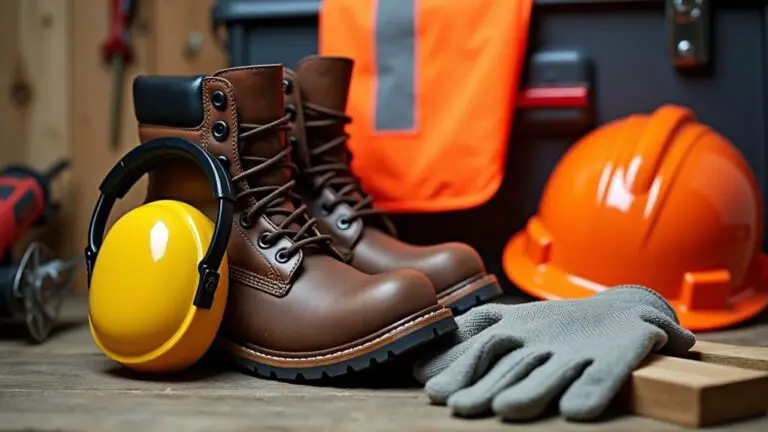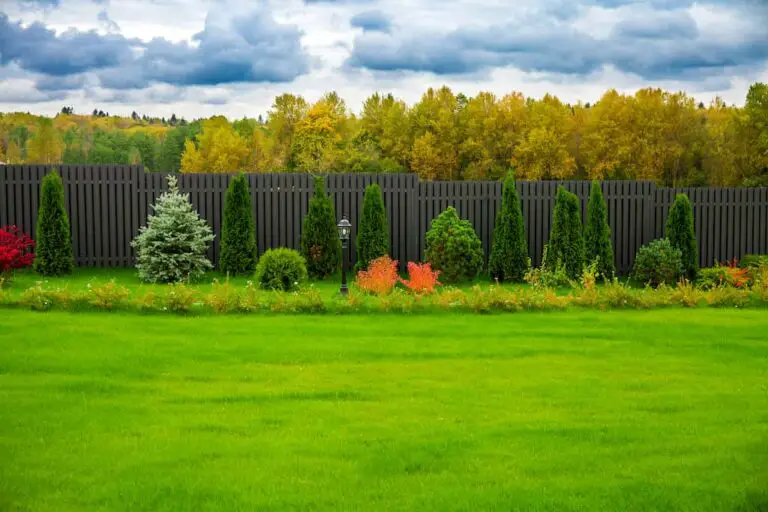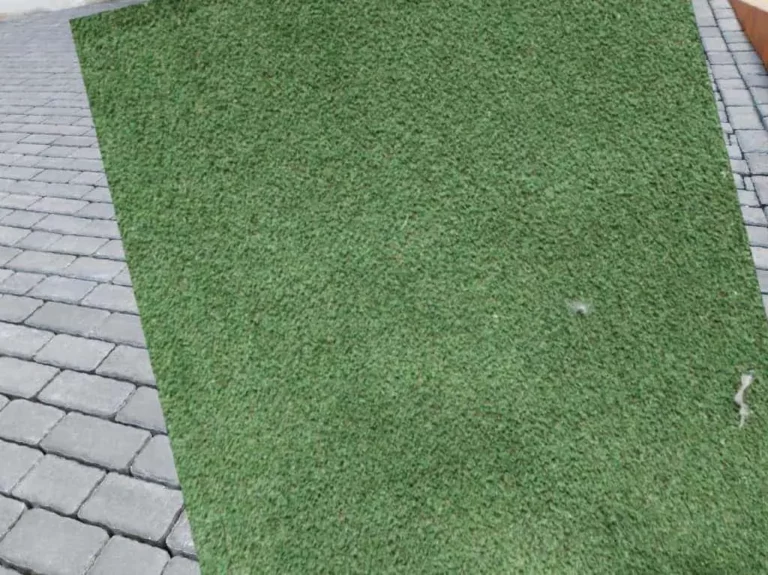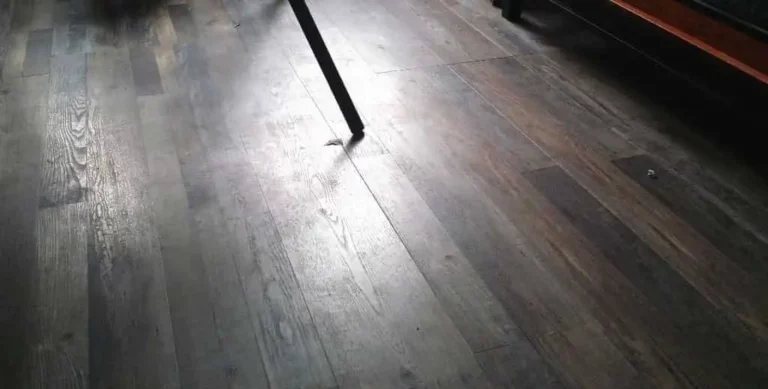House Fence Dimensions and Space: What You Need To Know
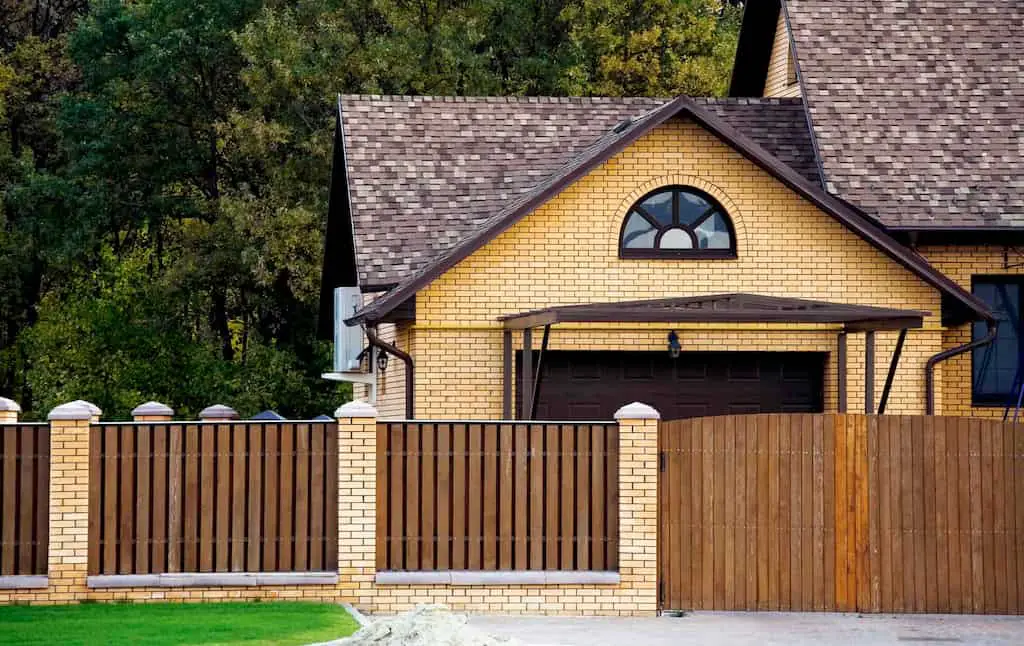
Building a new fence around your home isn’t easy; I ought to know. Having done it for my own home, I can tell you that there are a lot of issues that come with planning and putting together your own fencing.
What guidelines should you follow when planning your home’s fencing? It’s important to follow local zoning laws before you put together your house fence dimensions. Though most areas don’t have any specific standards for house fence dimensions and heights, having a good idea of general fencing guidelines can help make planning easier.
Before you take a trip to your local hardware store, it’s a good idea to understand what to expect when planning your enclosure. This guide will give you the scoop on important aspects of your fencing plans that many others forget.
How Close Can A Fence Be To A House?
This is a fairly loaded question, since there are multiple ways to answer it.
If you want a fence that’s very close to your own house, that generally won’t be an issue. You can put your fence as close as you want to your own house, as long as the fence is in your property line.
When it comes to other people’s homes, though, your local zoning laws will be able to decide that. You will need to know where your property line is before you consider placing a fence. Local zoning laws will tell you how close you’re allowed to build the fence from the property line.
Generally speaking, most towns will allow you to place your fence anywhere from two to eight inches away from the property line at most.
How Do I Check My Local Zoning Laws?
There are three common methods people use to check zoning laws in their areas. These include:
- Asking your fencing company about the local laws. If you’re hiring a professional fencing company to do your fence installation, chances are that they will know how close your fence can be.
- Calling city hall for zoning requirements. Calling your local city hall or non-emergency police department is a good way to ensure that you get the details on any construction you need to do.
- Asking your HOA. If you are part of a homeowners’ association, calling them to learn about requirements is the easiest method to use.
Do I Need A Permit To Build A Fence Around My House?
This all depends on your housing laws, but generally speaking, the answer is yes. A permit can be obtained through an application and paying a nominal fee at your local city hall. You will need to check with local officials to get the scoop on this procedure.
Important Fence Planning Tips
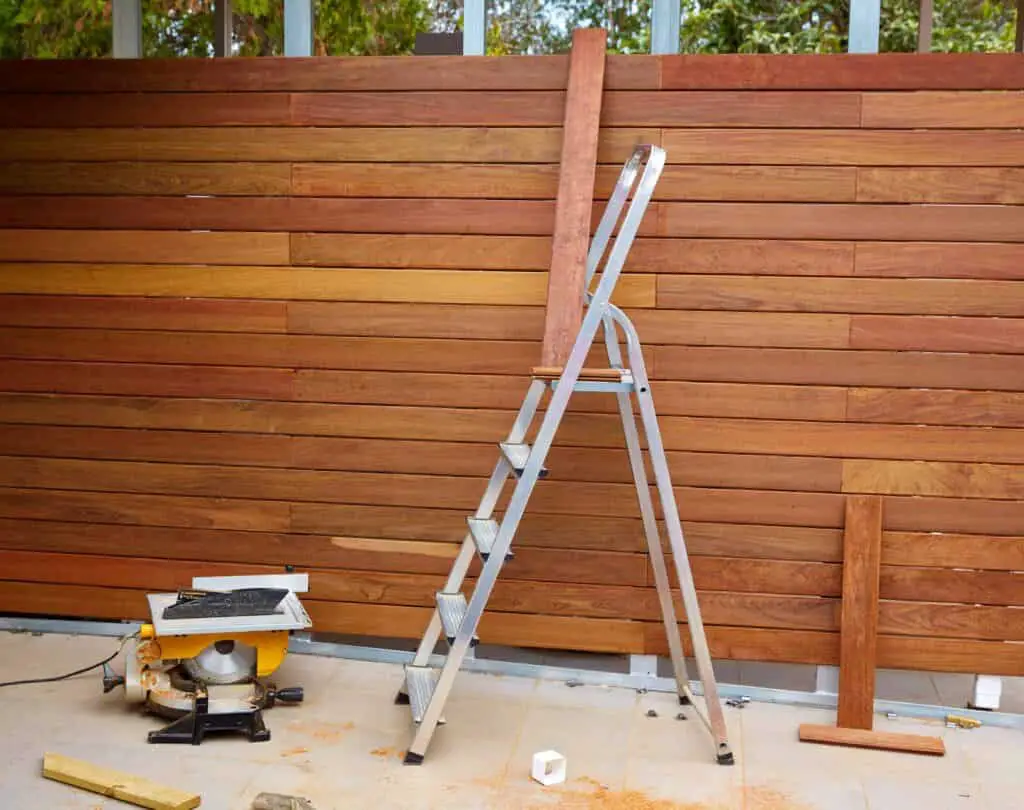
If you want to build a fence, zoning laws are not the only thing you should be worrying about. There’s also the matter of putting together a fence that actually makes sense for your architecture. These tips below can help you measure things out:
- Installing a fence over 8 feet high will keep away deer and give you privacy. Deer typically can’t clear a fence this high in a jump. When built without gaps, this fence height is typically considered to be a “privacy fence” since it will also make it difficult for people to peep onto your property.
- Pool fences are typically four feet in height. This is a matter of keeping people safe and also maintaining the pool’s cleanliness. They also will have to maintain proper clearance and spacing from the pool, per the CPSC standards.
- Small dogs can be confined with a four foot fence, jumpers will need a six foot fence. Dogs like Chihuahuas will be able to get penned with a four foot fence, but with a “jumper” breed like a German shepherd, you will need six feet of fence height to keep your dog inside.
- Always measure the clearance of your driveway and give at least a five inch clearance for gates. This can prevent getting “locked in” to your parking space or having ugly scrapes. The more clearance your fence has for your driveway, the better off you’ll be.
- Most towns will also have an opacity minimum for front yard fences. Opacity, when it comes to fences, means being able to see the house and yard beyond the fence. Most towns will require a minimum of 50 percent fence opacity for front yards, with some going so far as to ask for 75 percent visibility.
How High Can A Fence Around the House Be?
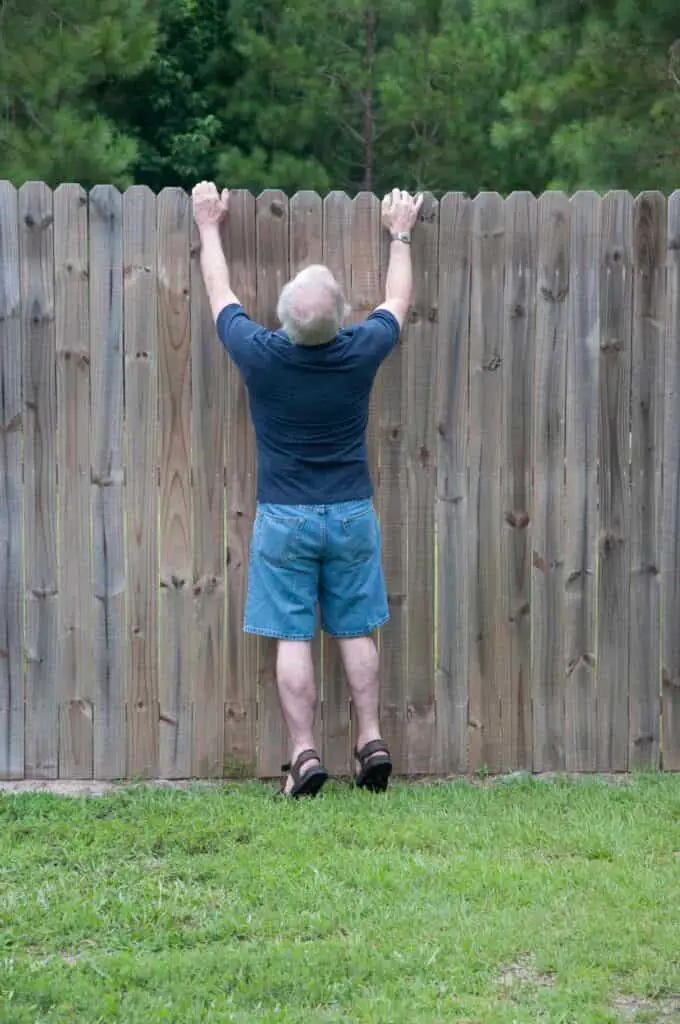
Once again, this is a local zoning law issue. Zoning laws, local township regulations, and HOA restrictions are what will come into play when discussing the tallest fence heights you can have. Thankfully, many towns will allow for extremely tall fences without issue.
There’s no national standard when it comes to minimum fence heights, so if you want to be technical about it, a fence can be as high as your local zoning laws allow for it to be.
Does Fence Dimensions Impact Strength?
Looking for a solid, sturdy fence? It’s a good idea to keep an eye on your fence build. Your fence’s strength will be impacted by both the material and the dimensions of your fence. You should keep an eye on the distance between your fence posts.
Fence posts act as a “backbone” to your fence. Too much distance between fence posts can weaken your fence’s structure and make it difficult for fences to stand on your own. Material matters here. These guidelines can help:
- A typical residential home with a wooden fence will have fence posts every six feet.
- Vinyl fencing will also need posts every six feet or so.
- Chain link fences can have the most distancing between posts, with typical residential fences having up to 10 feet of distance per post.
- Stone fences do not need posts in most cases.
- If you have vinyl or wooden fencing, the distance between your posts cannot be more than eight feet apart.
How High Can Fences Be Between Houses?
This can vary based on personal preferences and the overall use of the fence. How high fencing is depends on what the homeowner is using the fence for. Here’s some good things to know:
- Most towns have a height limit of six feet for back and side yard fencing, and a four-foot limit for front yards. These limitations are variable but generally are done to help preserve the overall look of the neighborhood. Extremely tall fences can be seen as an eyesore.
- If you want a higher fence, you might have to apply for a zoning variance. This can be a hassle, but it’s the only way to legally get the fence height you want to get. You may need to prove that you need a taller fence for safety or utility purposes.
- You will have a hard time getting a fence over 96 inches in height. Most manufacturers don’t make extremely tall fences because there’s very little demand for it. If you insist on an ultra-tall fence, expect to pay for it to be customized.
How Much Do House Fences Cost?
Now that we have a general idea of what to expect with fencing dimensions, let’s talk about the price of fencing. Fencing costs will vary based on material, height, and design. All fences are priced per foot. Let’s talk about each material type, and what you can expect in terms of raw footage costs…
Chain Link Fences
In terms of pricing, you can’t get more affordable than chain link fencing. Depending on the height of your fence, you can expect to pay anywhere from $5 to $18 per foot of fencing. It’s not pretty, but it will get the job done.
If you are looking for a cheap fence that will just separate your property or keep your dog inside, a chain link fence can help. If you were hoping for aesthetics, this isn’t a good option. A cheap wooden fence will be better.
Wooden Fences
Wooden fences are fairly pricey, but often last longer and add a beautifully rustic touch to a yard. A typical wooden fence will cost around $10 per foot for a four foot high fence. For fences that are six feet tall, you can expect a price of approximately $15 to $20 per foot.
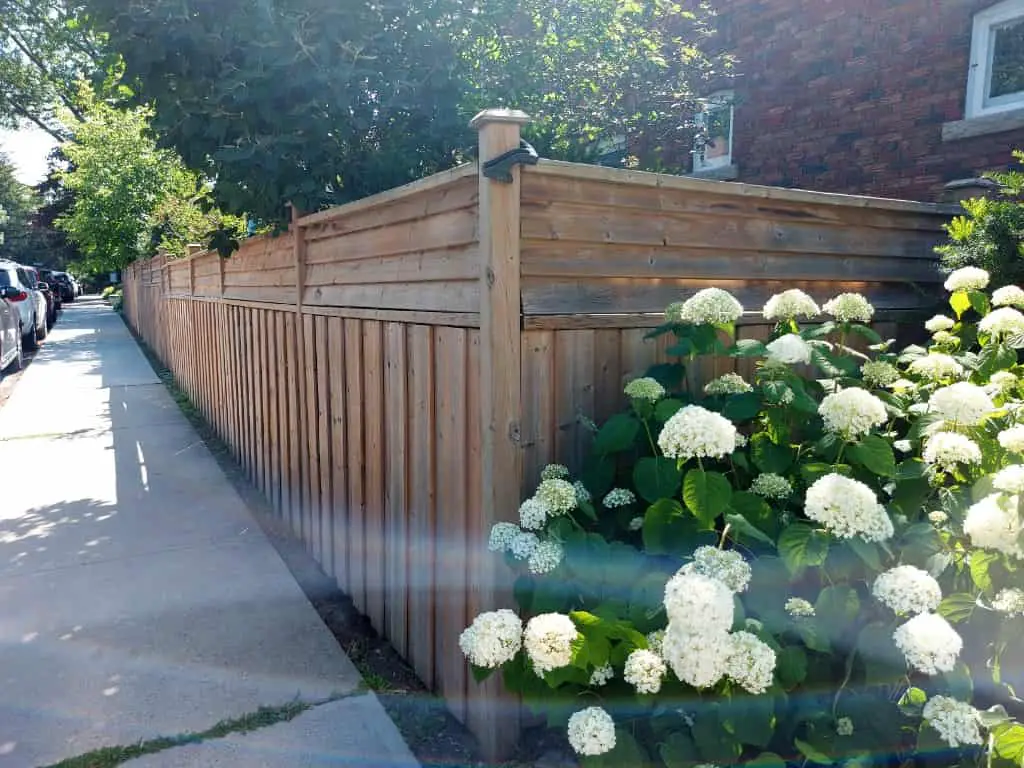
Vinyl Fences
Vinyl is a relatively new option, and it’s made to offer a wood-like appearance with minimal upkeep. Since they’re more durable and more visually appealing, there’s a premium price on vinyl fencing. You can expect to see prices upwards of $20 per square foot.
Wrought Iron
If you’re looking for a very stately option, wrought iron will work well. This extremely upscale fencing option doesn’t offer much for privacy, but does give your home a very elegant appearance while keeping others out.
Since wrought iron fences are often custom-made, you may need to budget anywhere from $45 to $80 per foot of fencing.
How Much Does It Cost To Install A Fence?
Each fence installation project will differ from home to home, since every home will have different needs. However, there are still general averages that can give you a better idea of what to expect in terms of your fencing costs.
According to Home Guide, this is what each budget genre of fencing will run for a typical installation:
- Low-End. Budget-hunting homeowners who need a new fence should expect to pay a $1,500 price tag on average. The lowest price tag the site found was $200 for a full yard.
- Average. If you’re open to a middle-of-the-road fencing job, then you should expect to pay around $1,800 for your yard to get fences in.
- Luxury. High-end fences will carry a premium price tag. On average, you should expect to pay $3,000 for a luxury fence. The site also mentioned that the maximum cost for luxury fences tends to cap out at $6,600.
Obviously, these averages are done on a national level. Your estimates will vary based on the material you choose, the fence model you choose, where you live, site preparation, and how many feet you will be fencing in.
How Does Fence Installation Prep Factor Into Pricing?
Before you can install a fence, you will need to clear your area of obstacles that stand in the way of your fencing. This can include trees, rocky areas, boulders, as well as hills. Your installation crew will take preparation into account when they offer your labor estimates.
Ideally, you will have a yard with few trees, few rocks, and a flat terrain. If you don’t have that type of yard, you might need to budget extra money towards preparation.
Why You Shouldn’t Go Cheap When It Comes To Fencing
Fencing your home is a major endeavor, and like with any major purchase, you need to view this as an investment. Good fencing, paired with good installation, will not be cheap. Cheap fencing will need regular repairs and may also require replacement sooner rather than later.
If at all possible, treat your fencing like a splurge. It may prevent you from having to spend extra money on repairs in the future.
Learn more!!! Backyard Landscaping Ideas Along Fence
Related Questions
- What are the most durable types of fencing? According to home experts, the most durable fencing types are vinyl, stone, wrought iron, and chain link fencing. Wood fences often need repairs within a couple of years of purchase.
- Why is chain link fencing banned in some areas? HOAs and local officials have been known to ban chain link fencing due to aesthetic reasons. It doesn’t look good, which can cause property values to get damaged as a result of it being installed.
- Why was my fencing estimate so high? Aside from material costs, fencing installation estimates can be impacted by the amount of labor that a group has to do in order to prep the area for installation. Rocky terrain, hills, and tree-heavy areas can all become obstacles that increase the labor cost estimate of your fencing project.
- What do I do if my neighbor built a fence in my yard? This is often a civil law matter. You may need to file a complaint with your municipality or go to court in order to get the fence removed.
